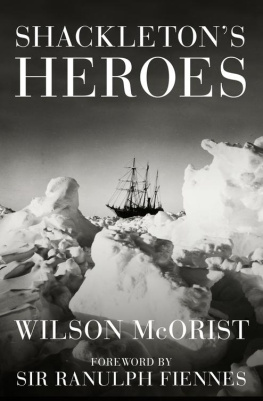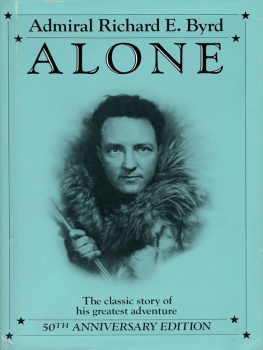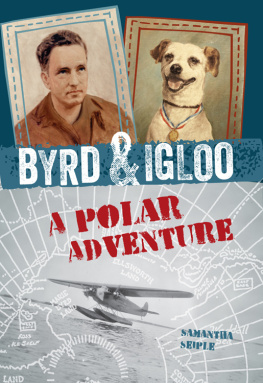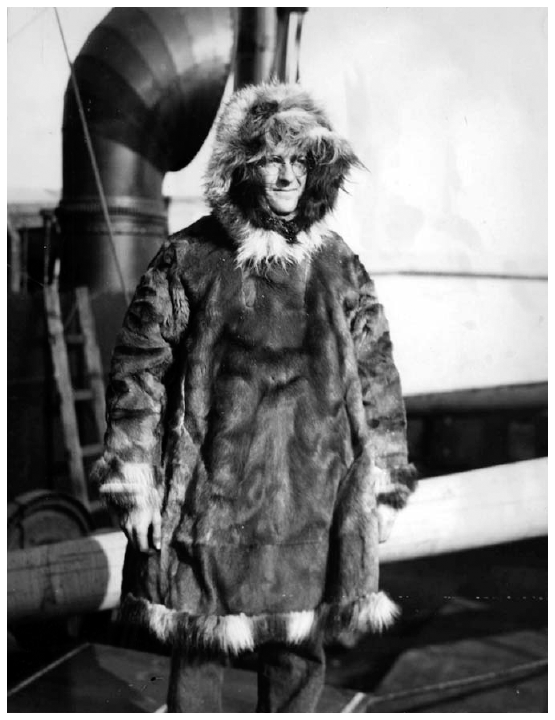Stuart D. Paine - Footsteps on the Ice: The Antarctic Diaries of Stuart D. Paine, Second Byrd Expedition
Here you can read online Stuart D. Paine - Footsteps on the Ice: The Antarctic Diaries of Stuart D. Paine, Second Byrd Expedition full text of the book (entire story) in english for free. Download pdf and epub, get meaning, cover and reviews about this ebook. year: 2007, publisher: University of Missouri Press, genre: Detective and thriller. Description of the work, (preface) as well as reviews are available. Best literature library LitArk.com created for fans of good reading and offers a wide selection of genres:
Romance novel
Science fiction
Adventure
Detective
Science
History
Home and family
Prose
Art
Politics
Computer
Non-fiction
Religion
Business
Children
Humor
Choose a favorite category and find really read worthwhile books. Enjoy immersion in the world of imagination, feel the emotions of the characters or learn something new for yourself, make an fascinating discovery.
- Book:Footsteps on the Ice: The Antarctic Diaries of Stuart D. Paine, Second Byrd Expedition
- Author:
- Publisher:University of Missouri Press
- Genre:
- Year:2007
- Rating:3 / 5
- Favourites:Add to favourites
- Your mark:
Footsteps on the Ice: The Antarctic Diaries of Stuart D. Paine, Second Byrd Expedition: summary, description and annotation
We offer to read an annotation, description, summary or preface (depends on what the author of the book "Footsteps on the Ice: The Antarctic Diaries of Stuart D. Paine, Second Byrd Expedition" wrote himself). If you haven't found the necessary information about the book — write in the comments, we will try to find it.
In 1933 Antarctica was essentially unexplored. Admiral Richard Byrd launched his Second Expedition to chart the southernmost continent, primarily relying on the muscle power of dog teams and their drivers who skied or ran beside the loaded sledges as they traveled. The life-threatening challenges of moving glaciers, invisible crevasses, and horrific storms compounded the difficulties of isolation, darkness, and the unimaginable cold that defined the mens lives.
Stuart Paine was a dog driver, radio operator, and navigator on the fifty-six-man expedition, the bold and complex venture that is now famous for Byrds dramatic rescue from Bolling Advance Weather Base located 115 miles inland. Paines diaries represent the only published contemporary account written by a member of the Second Expedition. They reveal a behind-the-scenes look at the contentiousness surrounding the planned winter rescue of Byrd and offer unprecedented insights into the expeditions internal dynamics.
Equally riveting is Paines breathtaking narrative of the fall and summer field operations as the field parties depended on their own resources in the face of interminable uncertainty and peril. Undertaking the longest and most hazardous sledging journey of the expedition, Paine guided the first American party from the edge of the Ross Sea more than seven hundred miles up the Ross Ice Shelf and the massive Thorne (Scott) Glacier to approach the South Pole. He and two other men skied more than fourteen hundred miles in eighty-eight days to explore and map part of Antarctica for the first time.
Footsteps on the Ice reveals the daily struggles, extreme personalities, and the matter-of-fact bravery of early explorers who are now fading into history. Detailing the mens frustrations, annoyances, and questioning of their leader, Paines entries provide rare insight into how Byrd conducted his expeditions. Paine exposes the stresses of living under the snow in Little America during the four-month-long winter night, trapped in dim, crowded huts and black tunnels, while the men uneasily mulled over their leaders isolation at Advance Base. The fates of Paines dogs, which provided some of his most difficult and rewarding experiences, are also describedhis relationship with Jack, his lead dog, is an entrancing story in itself.
Featuring previously unpublished photographs and illustrations, Footsteps on the Ice documents the period in Antarctic exploration that bridged the heroic era and the modern age of mechanized travel. Depicting almost incomprehensible mental and physical duress and unhesitating courage, Paines tale is one of the most compelling stories in polar history, surpassing other accounts with its immediacy and adventure as it captures the majesty and mystery of the untouched Antarctic.
Stuart D. Paine: author's other books
Who wrote Footsteps on the Ice: The Antarctic Diaries of Stuart D. Paine, Second Byrd Expedition? Find out the surname, the name of the author of the book and a list of all author's works by series.











 This paper meets the requirements of the American National Standard for Permanence of Paper for Printed Library Materials, Z39.48, 1984.
This paper meets the requirements of the American National Standard for Permanence of Paper for Printed Library Materials, Z39.48, 1984.